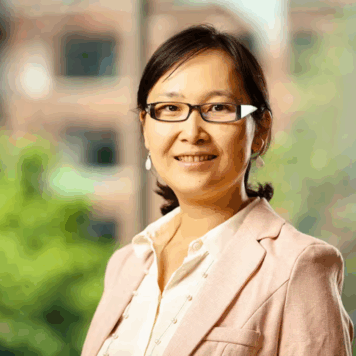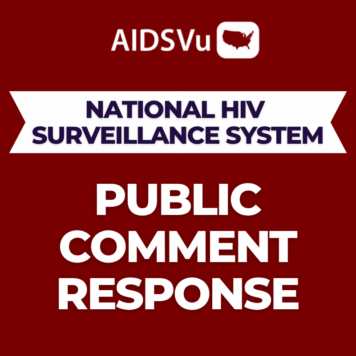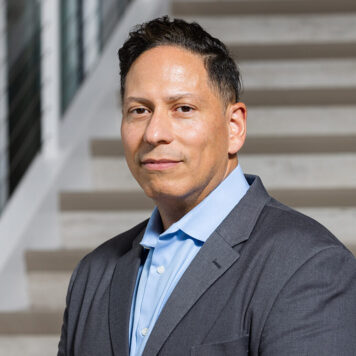Stephen Karpiak, PhD, is the Senior Director for Translational and Applied Research for the ACRIA Center on HIV and Aging at GMHC and is on faculty at NYU College of Nursing.
Q: You’ve dedicated the second half of your career to research that focuses on the intersection of HIV and aging. What motivated you to decide this was the area of study you wished to focus on?
It actually began with a simple questionnaire. I was head of an agency called Pride Senior Network doing research and advocacy for older LGBTQ folks in New York City. I was renting office space in the Callen-Lorde Community Health Center that focused on the LGBTQ population. They were hosting a health fair. I saw this as an opportunity to ask individuals of the LGBTQ community, “If you suddenly fell ill, or if you were older and experiencing the conditions of aging, do you have someone who would care for you?” From this questionnaire, I found that if you were older than 50, about 20% said they knew someone who could provide that kind of care that goes along with aging or with illness. However, if you were younger, 70% said that they knew someone.
For a researcher, these findings were a signal that further study was needed. I discovered the issue of informal caregiving: those who provide care but are not paid to do so, such as family members. Eventually, I began working with Emerita Marge Cantor, a renowned gerontologist who “wrote the book on caregiving.” Together we received research funding to determine if older LGBTQ people have access to caregivers.
Without caregiving, the health arc of aging is not optimal. There are over 44 million caregivers in the United States. The price tag for informal caregiving is more than $500 billion annually if the caregivers were paid. In 2005, I published my first research paper on caregiving, specifically demonstrating how people with HIV have extremely fragile social networks. Caregivers are generally derived from a person’s social network which is dominated by spouses/partners and family members, especially children. To this day, my research conclusions persist with multiple research efforts validating my initial observation.
Q: In your position as Senior Director of Research at GHMC’s Center for HIV and Aging, you have contributed to and overseen research projects on HIV and aging-related topics globally. What have you learned over the years and where do we still need more insight?
We still observe the same conclusion I made in 2005 about fragile social networks, which indicates that we need to rely on more formal support and services for caregiving among older people living with HIV. However, as soon as one mentions the word “formal,” you have to talk about money because someone must pay for those services. Today, almost 60% of all people living with HIV in the U.S. are over the age of 50. By the end of the next decade, the number of older adults with HIV will rise to 70%, These older adults with HIV need supportive social services that go beyond typical clinical care, which is essentially disease management. Most (65-70%) live alone, estranged from their families and friends as a function of AIDS-associated stigma. Their social isolation is a protective choice they make, fearing the negative reaction of people when they discover their serostatus. They constantly face barriers to accessing care. Certain data suggest that low social support translates into increased hospitalizations and overall mortality in this population. Their social isolation and often associated loneliness are predictors of poor health outcomes as well as 4-6 times higher rates of depression. They have challenges with day-to-day tasks including, transportation, finances meal preparation, employment, housekeeping, and entitlements. The mental and social health of PLWH has been poorly managed.
Most studies in HIV have focused on adherence to antiretroviral treatment but also how treatment of other conditions affects adherence to ART, and adherence to the overall treatment regimen is not known. Research suggests that variations in adherence patterns to ART and other treatments vary depending on symptom attribution, medication concerns, and coping strategies.
When we reflect on the early days of the AIDS epidemic, we all became caregivers in some form. Families rejected sons largely because they were not ready to accept their sons as gay and many of those sons died from AIDS. Therefore, as community members, we took care of each other. It was mostly short-term care back then because more often they would succumb to AIDS in a few months. Today caregiving is much more demanding. Chronic conditions like heart disease, kidney disease, and dementia complicate care for older adults with HIV. I believe that the community still needs to step up to fill the gap of informal caregivers, though it is more challenging and likely for years and not months.
When I would speak to older adults with HIV over the years, they generally understood that they were lacking friends. Some had partners, but my research, and many others, have found 70% lived alone— which is still true today. In addition to the social isolation in this population, the fear of disclosing one’s HIV status also complicates efforts to engage a caregiver and improve social networks. Older adults with HIV are afraid to connect with community services or others in their peer group, regardless of HIV status, because of disclosure issues and a fear of rejection. They feel absolutely abandoned today, and that continues even more so in the context of the COVID-19 pandemic.
Q: In a piece you wrote for Positively Aware, you said, “we live in a society where youth receive the highest premium. Aging is seen as a disease rather than an inevitable process of living.” How have you seen this mindset applied to older adults with HIV? Do you feel that we are doing enough from an advocacy, resource, and research perspective to address the needs and improve the health of older adults with HIV?
The COVID-19 pandemic showed us that we are an ageist society. People who are older are seen as disposable. We hear misinformation constantly: “this virus only affects old people,” so most people, “don’t need to worry about it so much.” This is ageism. We don’t need the government or anyone else chiming in to say that compared to a child, an older adult is disposable. It demonstrates no respect for life. It’s a huge barrier to overcome, and it’s not going to be easy. It will require years of work, although talking about ageism helps a great deal.
I am an eternal optimist, but I’m also a realist. We are still in the beginning stages of the pandemic. We do not know what the economic conditions are going to be post-pandemic, or even during it. Agencies are talking about caregiving in a structured way. Will they have the funds to continue to do so, or will all funds flow to clinical services only? This is particularly true of AIDS Service Organizations (ASO), who rely upon foundation and government funding to sustain supportive services that are critical for health. We simply do not know where that money is going to come from. Donors are always there, but they are burnt out. And convincing them to give money for something like taking care of older folks is an even greater challenge in a society that devalues the older adult.
In terms of practicality, what do we need? We need to sustain funding to those agencies like GMHC, the San Francisco AIDS Foundation, and other ASOs that need to shift their services toward older adults. Many have not done this. I know GMHC certainly made a commitment to older adults and they’re making progress, but other ASOs are just on the cusp. If you walk into any ASO and see a friendly environment that welcomes older adults, that’s a rarity. Most ASOs still emphasize youth, the efforts to end the epidemic, or changing sexual infection rates. The emphasis on youth ensures the exclusion of quality care for other groups who need more support, like older adults with HIV. Of course, ASO programming is largely driven but fund allocation by government and foundations.
Q: According to your study, Older Women with HIV: Healthy Aging Strategies, women over 50 represent one-quarter of U.S. older adults with HIV and there is little concrete knowledge about how this specific group experiences aging challenges. What did you learn during these interviews about aging as an older female with HIV? How can these findings be applied to the broader community of older adults with HIV for improved quality of life?
Over the years, I’ve learned—not just from my research, but also from interacting with older women who live with HIV—that this is a remarkable group of people. They are more resilient than most men I’ve encountered. They are energetic. They engage their challenges head-on. I don’t know exactly why that is, but I think it’s related to their life experiences. They’ve often had to care for children and be caregivers for parents and other family members. Even single moms with HIV, most of whom are economically disadvantaged, persist in self-care that results in elevated health outcomes as they age. I think that women’s social circles tend to be stronger, especially when they relate to caring for children as they have closer family ties. Of course, there are differences between women; they face different issues regarding sexual health and different types of comorbidities as they age. Women are amazing regardless, but HIV positive women are especially amazing. We need to study them more and talk with them and learn from them. They have an emotional resiliency that is contagious.
Q: September 18 is National HIV/AIDS and Aging Awareness Day, a day that highlights the specific needs of older adults living with HIV through education, advocacy, and research. What would be your message to those aging with HIV?
When we did our original research on a thousand HIV-positive people in New York City, we followed that by our research on nearly 1,500 people in San Francisco, Oakland, New York City, upstate rural New York State, and Chicago. There was a core message that you would detect in the focus group data – “You abandoned us.” When I say the “you,” the “you” is directed at the ASOs and society at large. These are people who survived the ’80s and ’90s. Here they are today: survivors. They say, “Gee, you saved our lives, but at what cost”? You gave us extended life, but at the cost of impoverishment, continued rejection, ageism, and stigma that is driven by persistent myths about HIV and HIV infection.
Older adults with HIV need care, not just clinical care, but care that is inclusive of physical and mental health. They need the support of their community. Many older adults with HIV have this perspective. We gave them a pill, then said goodbye to them. We did not give priority to their mental health issues. There was no pre-emptive effort to ameliorate those risks that contribute to poor aging health behaviors. We failed to understand the profound impact of sustaining community connections. Somehow, we managed to forget that social determinants impact health outcomes.
As researchers, awareness is a key part of our jobs. In 2002, about a quarter of the HIV population was over 50. Today, it’s over half. Talking about that number should be an obvious way to raise awareness, but it’s still a struggle. It’s still a struggle to make people pay attention to this phenomenon, especially om an ageist society. We have conducted many focus groups over these past 15-20 years. I have heard many older adults say, “the worst thing in the world is to feel abandoned” and even more unsettling is hearing from them “There is something worse than AIDS, like loneliness.” We succeeded in giving people infected with HIV the likelihood of a long typical life span. But we forgot that their health, especially as they age, is not only viral suppression and a functioning immune system.




